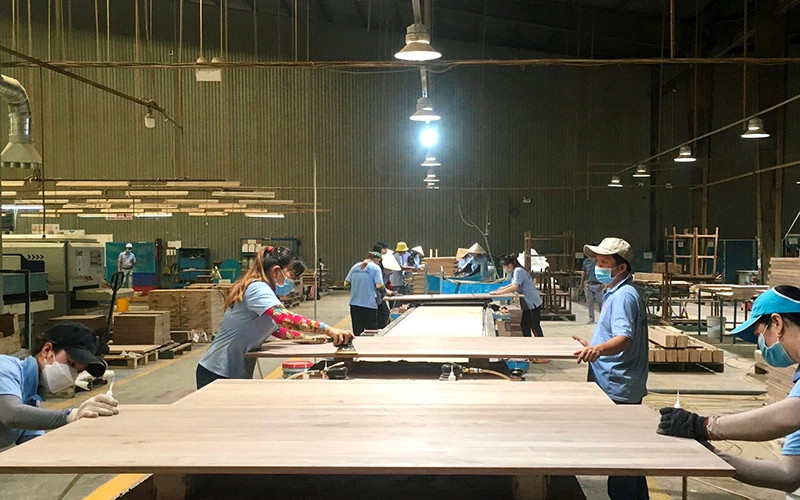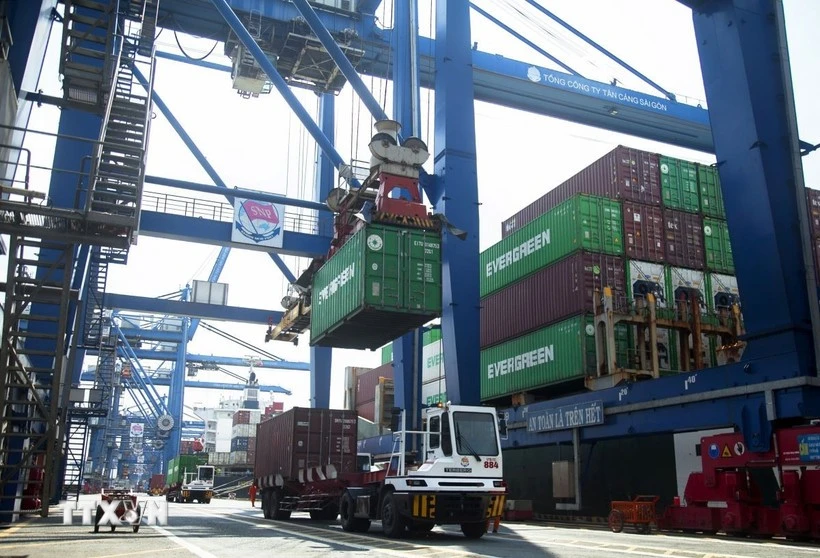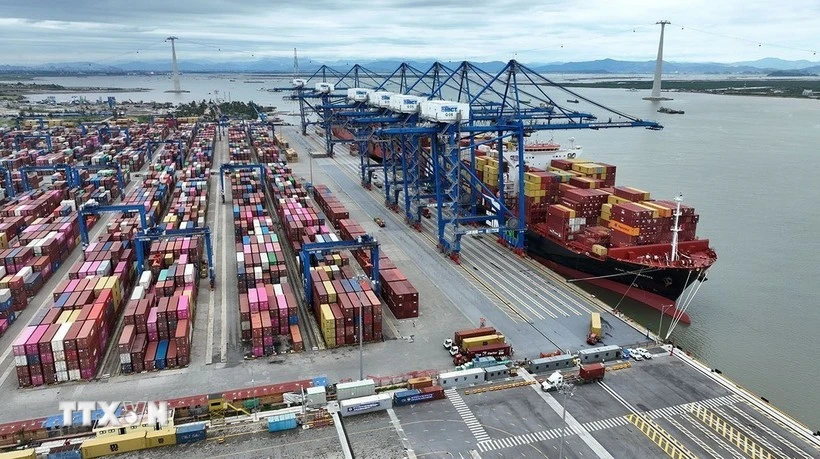Although the results are positive, the wood industry still faces many challenges. Therefore, it is necessary to identify suitable markets to improve export capacity in 2025 and the future.
Vietnam holds a leading proportion of wood exports in the world, having conquered important markets such as the US, the European Union (EU), the Republic of Korea (RoK), and Japan and increasingly expanding in emerging markets such as the Middle East and India.
Vietnam's wood processing industry has grown rapidly over the past 10 years, making us the world’s 7th largest wood and furniture producer and the 2nd largest exporter.
One of the factors driving the growth in the wood industry's export activities is the increasing import demand in major markets, especially the US market. The US market alone accounts for more than 54% of Vietnam's total wood and wood products export turnover.
According to analysts, the North American wood furniture market is growing rapidly and will reach about 400 billion USD by 2030. The US market alone accounts for about 64.4% of the total furniture market size in the region and is expected to grow at a rate of 5.1% annually. This is a huge potential with high stability for Vietnamese wood exporting enterprises.
Secretary General of the Vietnam Timber and Forest Products Association (VIFOREST) Ngo Sy Hoai said that the US is taking the majority of the total export turnover of wood and wood products of enterprises. Since the beginning of the year, wood exports to the US market have recovered significantly.
Through a survey of enterprises, orders to the US have increased steadily in recent times, and many enterprises have orders for the whole year 2025. This is very encouraging after the previous year’s decline and severe difficulties, especially during the COVID-19 pandemic.
Recently, the Vietnam Forestry Department worked with the US Forestry Department to evaluate past cooperation results, determine the content and plan for future cooperation in the forestry sector.
The Forestry Department highly appreciated the US side's cooperation and support for Vietnam in recent years in the forestry sector in terms of management, protection, sustainable forest development, biodiversity conservation, monitoring and assessment of forest resources, and climate change response, and requested the US side to continue to cooperate and support Vietnam in implementing the contents agreed upon by the two sides.
This is one of the contents of the cooperation relationship between the two countries in the forestry sector, to promote the sustainable development of forestry and the forest products trade sector, including wood products.
After the US market, except for the two markets of the RoK and Japan, which showed signs of a slight decrease of 2.7% and 1.4%, respectively, compared to 2023, the remaining major import markets, such as the EU and China, will still maintain quite strong growth in 2024.
With many strengths in forestry development, business support policies and free trade agreements, Vietnam's wood and wood product exports are progressing in the international market. Vietnam's wood industry is in a favourable position to take advantage of strong demand from domestic and international markets. At the same time, businesses are investing in new technology, converting techniques to develop new products and services, improving competitiveness, and increasing efficiency and productivity.
According to the VIFOREST, the consumption of goods in many large markets such as the US and Europe, is gradually receiving positive signals. This will promote an increase in export orders, including wood and wood products. Accordingly, the wood industry’s export activities in 2024 recorded a positive growth rate, and with the current growth momentum, it is forecasted that the wood industry will have many positive prospects in 2025.
Despite many advantages, the wood industry also faces difficulties. Major export markets increasingly require strict control of wood origin to ensure legality, no impact on degradation or deforestation, green production, and a reduction of greenhouse gas emissions. The risk of trade fraud and fake origin of goods is increasing. Complicated trade competition is also considered a significant challenge for Vietnamese wooden furniture exporting enterprises.
Therefore, identifying markets to allocate export resources plays a vital role. In addition to objective factors, enterprises’ internal capacity is currently limited since most enterprises process according to orders and designs of foreign distributors. Production and export have grown continuously for many years but rely on cheap labor and raw materials with a low product added value.
Most businesses are small-scale and incapable of building brands. They have poor resilience to sudden and continuous market fluctuations. Products are rarely distributed directly to customers but must go through distribution channels. Foreign enterprises are also major obstacles that negatively impact the sustainability of wood product exports.
Therefore, for the wood industry to develop sustainably, in addition to meeting regulations and standards on origin and environment, the Vietnamese wood industry must focus on investing in design, innovation, and increasing the added value of products. Along with that, the wood industry must prepare carefully to overcome challenges and meet the international market‘s increasingly high demands.
Vietnam currently exports wood and wood products to more than 160 countries and territories. With the current growth momentum and the efforts of enterprises and management agencies, the wood industry is expected to continue achieving new goals and consolidating its position in the international market. Along with the efforts of wood enterprises, the responsible and timely participation of state agencies and business associations is crucial.
Accordingly, it is necessary to continue to support enterprises to improve their capacity to proactively respond to and resolve trade competition cases, minimising the negative impacts caused by lawsuits. It is necessary to do a good job of propaganda, organise exhibitions, promote investment, introduce products, and search for and expand consumption markets for wood and forest products.
It is necessary to closely monitor and promptly grasp the difficulties and shortcomings caused by mechanisms and policies to remove them for wood and forest product processing and exporting enterprises. For the sustainable development of the wood industry, it is necessary to synchronously implement solutions to improve institutions, support policies, capital, research and application of science and technology, linkage of forest planting and development of supporting industries.
Along with the identification and accurate assessment of market capacity, it is necessary to improve the quality of raw materials from planted forests to create certified wood sources and promote the application of automation technology in the processing of wood products and wood by-products to improve the efficiency of raw material use. At the same time, there is a strategy to train long-term, high-quality human resources with deep expertise to develop a modern wood-processing industry to meet practical needs.
















